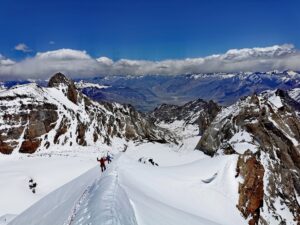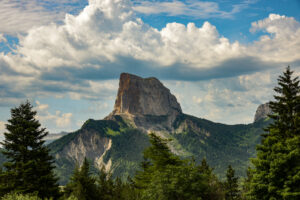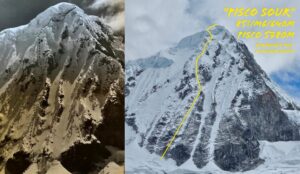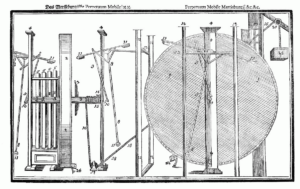In Nepal, there are 86 peaks (including sub-peaks) between 7,000m and 7,999m. Some of them haven’t been climbed in years. Continuing our series on Nepal’s forgotten 7,000’ers, we explore the climbing history of 7,422m Yangra Kangri, also known as Ganesh I.
The Ganesh Himal
The Ganesh Himal is a sub-range of the Himalaya, located mostly in north-central Nepal, about 70km northwest of Kathmandu. Some of its peaks straddle the Nepal-Tibet border. Langtang Himal lies to its east, and the Budhi Gandaki Valley and Shyar Khola Valley are to its west. These valleys separate the Ganesh Himal from the Sringi Himal and Mansiri Himal.
At 7,422m, Yangra Kangri is the highest peak in the Ganesh Himal. However, three other peaks also surpass 7,000m: 7,118m Ganesh II (also known as Toro Gompa Ri), 7,104m Pabil (Ganesh III), and 7,043m Salasungo (Ganesh IV).
There are also 14 subpeaks in the Ganesh Himal that are above 6,000m high.

The Ganesh Himal. Photo: Nepal Trek Hub
It should be noted that both The Himalayan Database and the American Alpine Journal identify Pabil as Ganesh IV and Salasungo as Ganesh III. But we will follow climbing historian Eberhard Jurgalski’s lead and refer to Pabil as Ganesh III and Salasungo as Ganesh IV. This is logical considering the height order of the peaks.
Yangra Kangri
Bill Tilman and his party first scouted Yangra Kangri during a 1949-1950 trip. They approached the Ganesh Himal from the southeast on their way to Langtang Himal.
During the summer of 1949, they claimed to have climbed 5,903m Paldor, a southern outlier. But they gave few details about the climb, and it seems likely that Tilman, Peter Lloyd, Tenzing Sherpa, and Da Namgyal Sherpa ascended an unknown peak rather than Paldor.

Paldor. Photo: Treks in Nepal
Yet they definitely scouted Yangra Kangri. They believed that the southwest ridge offered a straightforward route to the top. But as writer Jill Neate noted, Tilman and Lloyd later discovered that the southwest ridge sprang from a high col, and the rotting face of a huge icefall threatened the route. Tilman and Lloyd approached the col but had to turn around because of bad conditions caused by warm weather from the monsoon.

Yangra Kangri (right). Photo: Sudan Shrestha
The 1953 northwest ridge attempt
In the spring-summer of 1953, New Zealanders Athol Roberts, Maurice Bishop, Philip Gardner, and Graham McCallum obtained permission to climb in the Budhi Gandaki area.
They attempted Ganesh II and Lampu, ascended Chamar North, and tried to climb Yangra Kangri by the northwest ridge. They eventually abandoned this attempt at 6,100m because of poor snow and ice. The team also suffered from altitude sickness.
Beyond 6,100m, they could see a 450m section of serrated ice towers and a final section of 900m to the summit. It seemed to include a vertical rock step and an ice crown.
The Japanese attempt
In the spring of 1954, a Japanese team led by Yaichi Hotta targeted Manaslu. But faced with a hostile reaction from locals, they changed their objective to Yangra Kangri.
The only information they had about the peak was a description by Namgyal Sherpa, who had been the sirdar for the New Zealand team one year before. Like that team, Hotta’s party could not find a feasible route to the top and made it no higher than 6,350m.

Yangra Kangri. Photo: Sundararajan Ramanathan
Lambert’s team, 1955
On September 20, 1955, a Franco-Swiss expedition led by Raymond Lambert arrived at Yangra Kangri via the Chilime Valley.
Lambert’s team included five men, Eric Gauchat, Pierre Vittoz, and Claude Morel from Switzerland, Paul Gendre and Robert Guinox from France, and one French woman, Claude Kogan.
Kogan was one of the most important female climbers of her generation. With several outstanding climbs in the Alps, the Caucasus, Greenland, and the Andes, she was ahead of her time. Before the Yangra Kangri expedition, Kogan’s resumé already included the north face of Aiguille de Dru in 1946, the second ascent of 6,036m Quitaraju in 1951, the first ascent of Salcantay in the Andes, the first ascent of 7,135m Nun in the Himalaya with Pierre Vittoz in 1953, and what she believed to be first ascent of Alpamayo in 1951. (Later analysis of their photos suggests that they did not reach the true summit.)
Eight Sherpa porters accompanied the Franco-Swiss team: Nami (sirdar), Kami Tsering, Pasang, Ang Temba, Pasang Temba, Pemba Norbu, Ngawang Tsering, and Nyima Dorje.
Two days after they arrived at base camp, the team climbed a nearby 5,050m peak, which they named Pointe de Sandjet. The next day, they started to scout Yangra Kangri.

Claude Kogan. Photo: Micheline Rambaud
Immediate difficulties
Lambert and Kogan looked at approaches to the south col, while Vittoz and the rest of the team started to explore the south face.
Almost immediately, Vittoz fell ill with a high fever. On October 6, Lambert evacuated Vittoz to Kathmandu. Ten days later, Lambert returned to the mountain.
Though the team was not lucky with the weather, they eventually established three camps up the southeast face.
Three members started their push for the summit on October 24. Lambert, Kogan, and Gauchat left Camp 3 at 6,300m and climbed to the saddle between the main and east peaks. After seven hours, they topped out on the main peak.

Pabil, Salasungo, and Yangra Kangri in the Ganesh Himal. Photo: Subhas Chattopadhyay
Tragedy
The summit was a hostile place, with dangerous cornices that threatened to plunge them down the Tibetan side of the mountain.
The small party started to descend sometime after noon. Gauchat, a young, talented climber, decided to go ahead of the other two, against Lambert’s orders. The slope was very dangerous because a strong wind had smoothed and hardened the surface. Suddenly, Gauchat slipped and fell into the abyss.
Kogan and Lambert could not descend along the line where Gauchat fell to check on their companion. Only the next day, after making an important detour, could they reach him. By then, Gauchat was already dead.
Since this first ascent in 1955, there have been no other successful ascents of Yangra Kangri. There have only been six more expeditions to the mountain, most recently in 2012.

Ganesh Himal. Photo: Alpine Sherpa Guide






